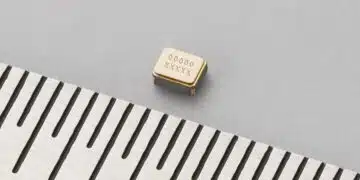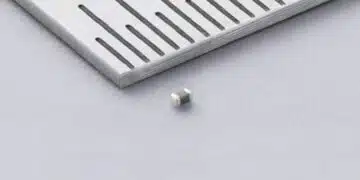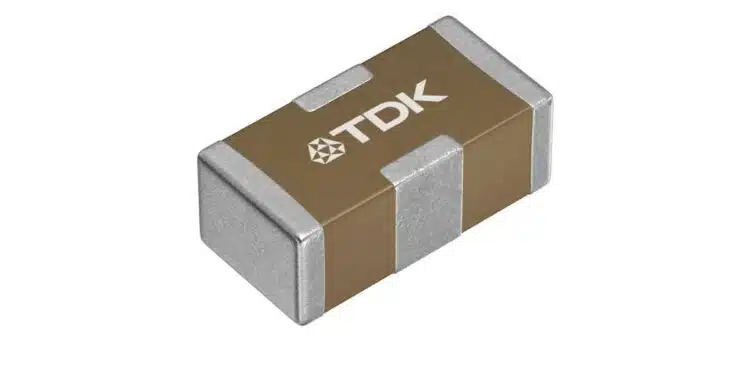TDK offers new 3-terminal filters for automotive applications, including 35V products with 0.22µF and 10V products with 4.7µF. These filters contribute to reduced component count, miniaturization, and voltage fluctuation.
TDK Corporation expanded its YFF series of 3-terminal filters for automotive applications to include higher voltages up to 35 V and higher capacitances up to 4.7µF.
Such components are used to suppress voltage variation and high-frequency noise, which can cause system malfunctions. Mass production of the product series began in June 2025.
With the miniaturization of automotive electronic systems, there is an increasing demand for measures to prevent system malfunctions. Usually, numerous capacitors are employed in such applications.
On the other hand, the number of components must be reduced due to the miniaturization of these systems. To address these challenges, 3-terminal filters, characterized by a low ESL (equivalent series inductance), are gaining significant demand.
By optimizing the material selection and product design, the new products feature significantly higher withstand voltage, ranging now from 6.3 V to 35 V, and considerably higher capacitance, ranging now from 0.47 μF to 4.7 μF.
The 35-V product with an insertion loss of 40 dB (4 MHz to 2 GHz) can be used for a broader range of power lines, including both input and output of power-supply systems, while the 4.7 μF product with an insertion loss of 30 dB (300 kHz to 3 GHz) is more effective as input capacitors than conventional products in reducing voltage fluctuation and countering high-frequency noise. Moreover, depending on set usage conditions, it is possible to halve the component count required to suppress voltage fluctuations to the same extent from the MLCC.
Features
- Reduction of component count and the miniaturization of sets, as well as reduced voltage fluctuation and high-frequency noise by realizing high withstand voltage and large capacitance
- High reliability qualified based on AEC-Q200
Applications
- For smoothing, filtering, and decoupling power lines in automobiles





























